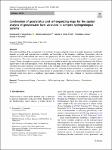Item Infomation
Full metadata record
| DC Field | Value | Language |
|---|---|---|
| dc.contributor.author | Varouchakis, Emmanouil A. | - |
| dc.contributor.author | Solomatine, Dimitri | - |
| dc.contributor.author | Perez, Gerald A. Corzo | - |
| dc.date.accessioned | 2023-08-07T02:58:37Z | - |
| dc.date.available | 2023-08-07T02:58:37Z | - |
| dc.date.issued | 2023 | - |
| dc.identifier.uri | https://link.springer.com/article/10.1007/s00477-023-02436-x | - |
| dc.identifier.uri | https://dlib.phenikaa-uni.edu.vn/handle/PNK/8703 | - |
| dc.description | CC-BY | vi |
| dc.description.abstract | Successful modelling of the groundwater level variations in hydrogeological systems in complex formations considerably depends on spatial and temporal data availability and knowledge of the boundary conditions. Geostatistics plays an important role in model-related data analysis and preparation, but has specific limitations when the aquifer system is inhomogeneous. This study combines geostatistics with machine learning approaches to solve problems in complex aquifer systems. Herein, the emphasis is given to cases where the available dataset is large and randomly distributed in the different aquifer types of the hydrogeological system. Self-Organizing Maps can be applied to identify locally similar input data, to substitute the usually uncertain correlation length of the variogram model that estimates the correlated neighborhood, and then by means of Transgaussian Kriging to estimate the bias corrected spatial distribution of groundwater level. | vi |
| dc.language.iso | en | vi |
| dc.publisher | Springer | vi |
| dc.subject | geostatistics and self-organizing | vi |
| dc.subject | complex hydrogeological systems | vi |
| dc.title | Combination of geostatistics and self-organizing maps for the spatial analysis of groundwater level variations in complex hydrogeological systems | vi |
| dc.type | Book | vi |
| Appears in Collections | ||
| OER - Khoa học môi trường | ||
Files in This Item:

